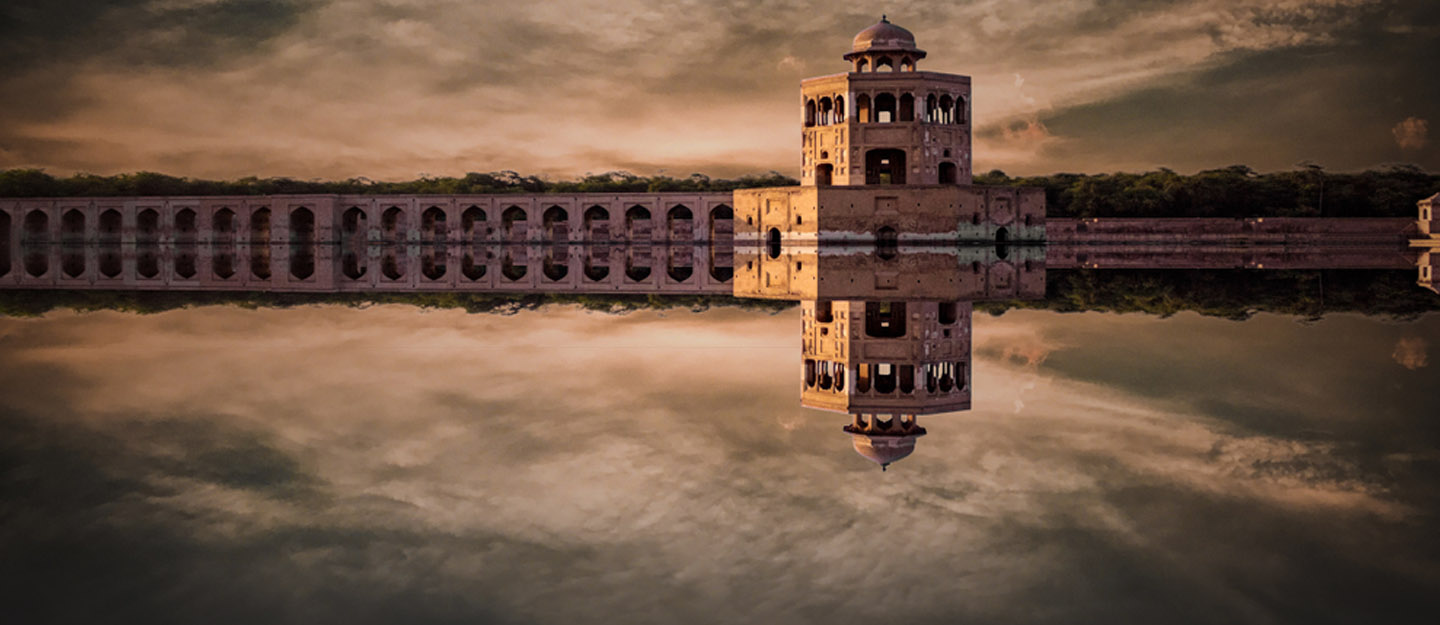In This Post
– Visiting Badshahi Mosque
– Visiting Lahore Fort
– Visiting Minar-e-Pakistan
– Visiting Shalimar Gardens
– Visiting Katas Raj Temple
– Visiting Noor Mahal
– Visiting Derawar Fort
– Visiting Rohtas Fort
– Visiting Khewra Salt Mine
– Visiting Hiran Minar
Did you know Pakistan was declared the top holiday destination in the world for 2020 by international luxury travel magazine Conde Nast Traveler? Also, let’s not forget that Forbes recently listed Pakistan as one of the top 10 under-the-radar tourist destinations for 2020. Needless to say, these are high accolades for a country that was once considered an unsafe place to visit up until a few years ago. However, 2019 turned out to be a rather great year for tourism in Pakistan, with a large number of influential travel vloggers visiting the country and falling in love with its culture, history, beauty and hospitality. To put it simply, there is no shortage of places to visit in Pakistan. Therefore, to make things a little easier for you, we’ve brought you a list of top tourist attractions in Punjab so you can start planning your itinerary for the next holiday season.
Owing to its rich cultural history and geographical location, Punjab is home to some of the most renowned tourist attractions in Pakistan. From the magnificent Mughal-era heritage sites in Lahore to the grand iconic palaces in Bahawalpur, this province boasts an impressive number of spots that are perfect for those who love exploring new places and have an interest in history.
Let’s get started.
Top Tourist Attractions in Punjab
These are some of the some popular as well as historical places to visit in Punjab. So, if you love travelling, make sure to add these tourist attractions to your travel bucket list.
- Badshahi Mosque
- Lahore Fort
- Minar-e-Pakistan
- Shalimar Gardens
- Katas Raj Temple
- Noor Mahal
- Derawar Fort
- Rohtas Fort
- Khewra Salt Mine
- Hiran Minar
Let’s take a further look at each of these famous places in Punjab.
Badshahi Mosque
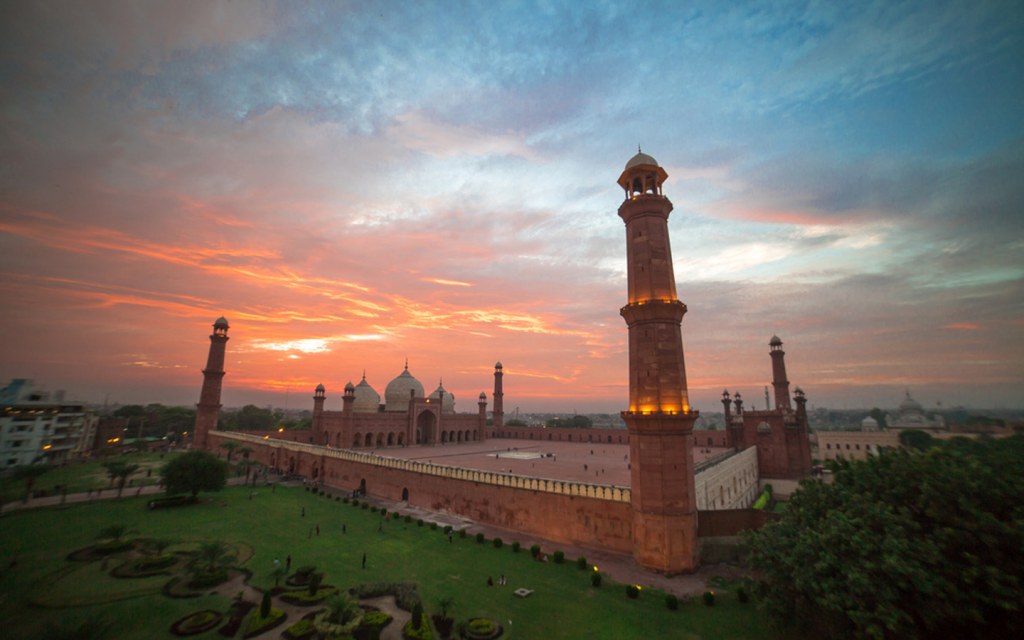
When it comes to the most renowned historical places in Punjab, Badshahi Mosque is probably the first name that pops into your mind, right? Located in the Walled City of Lahore, the majestic Badshahi Mosque is considered one of the largest mosques in Pakistan with the capacity to accommodate about 1 lakh people at the same time.
The stunning mosque was constructed during the rule of Mughal Emperor Aurangzeb and was connected to the magnificent Lahore Fort through its Alamgiri Gate.
The structure of the Badshahi Mosque reminds one of the splendour and craftsmanship of the Mughal architecture in the subcontinent. Situated atop an elevated platform, the imperial mosque features symmetrical design and boasts four tall minarets flanking the main prayer hall with four additional minarets surrounding the sprawling courtyard. The beautiful embellishments on the walls and ceilings of the mosque, the intricate mosaic art, extravagant hand-painted murals as well as gorgeous stone and marble work illustrate the splendour of the Mughal Empire.
Though Badshahi Mosque suffered major damage during the British rule, it underwent an extensive renovation in the 1960s and is now known as one of the top tourist attractions in Punjab.
Location: Walled City of Lahore, Lahore
Timings: 8:00 AM to 8:00 PM
Entry Fee: None
Lahore Fort
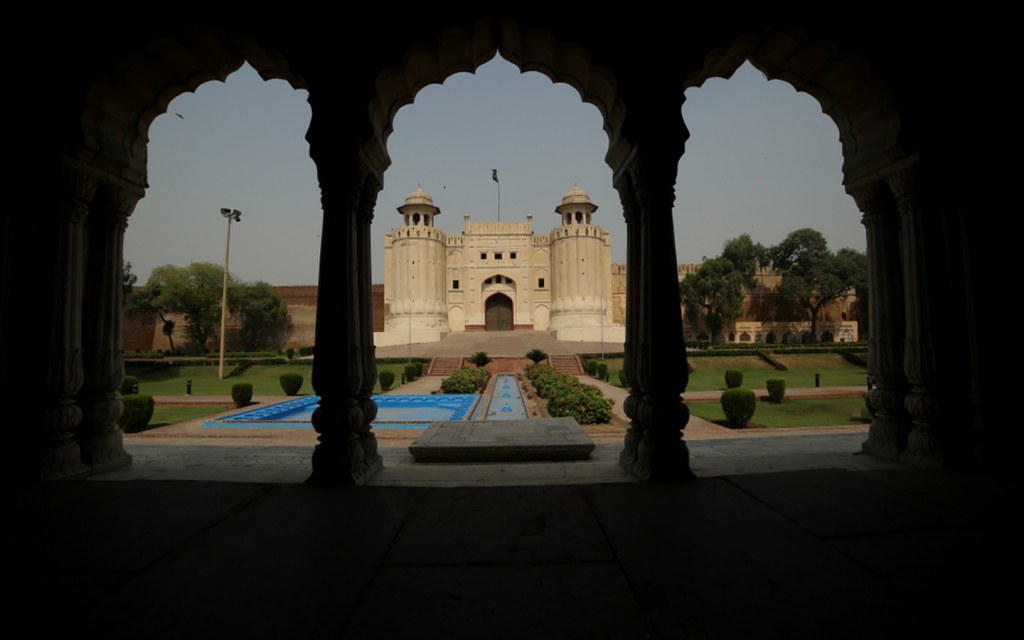
If you have ever visited Lahore, there is a good chance that you have already taken a trip to the centuries-old Lahore Fort located in the Walled City next to Badshahi Mosque. More popularly known as Shahi Qila, it is one of the most historic forts in Pakistan. It also enjoys the status of being one of the six UNESCO World Heritage Sites in Pakistan.
As the history books suggest, the site where this fort is located once housed a fortified structure that was mentioned in the writings of Iranian scholar and polymath Al-Biruni back in the 11th century. Some 200 years later, after the Mongol armies invaded the area and destroyed the stronghold, Sultan of Delhi Ghiyas ud din Balban rebuilt it. However, the structure was damaged yet again during the invasion of Persian Conqueror Amir Timur. Historians claim Sultan Mubarak Shah of the Sayyid Dynasty rebuilt it.
However, it was Mughal Emperor Akbar who laid the foundation of the modern Lahore Fort in 1566 AD. The fort, as we know it today, went through major modifications under the rule of King Akbar’s successors. After the downfall of the Mughal Empire, Maharaja Ranjit Singh of the Sikh Empire lived in this fort before it was taken over by the British Armies. Following the creation of Pakistan, Lahore Fort underwent major restoration work and was later declared a UNESCO World Heritage Site.
The most prominent features of this iconic fort include the lavish personal chambers of Emperor Shah Jahan called Naulakha Pavilion, the intricately designed Sheesh Mahal, and the famous Picture Wall.
Location: Walled City, Lahore
Timings: 08:30 AM to 05:00 PM
Entry Fee: PKR 30 + PKR 100 Sheesh Mahal
Minar-e-Pakistan
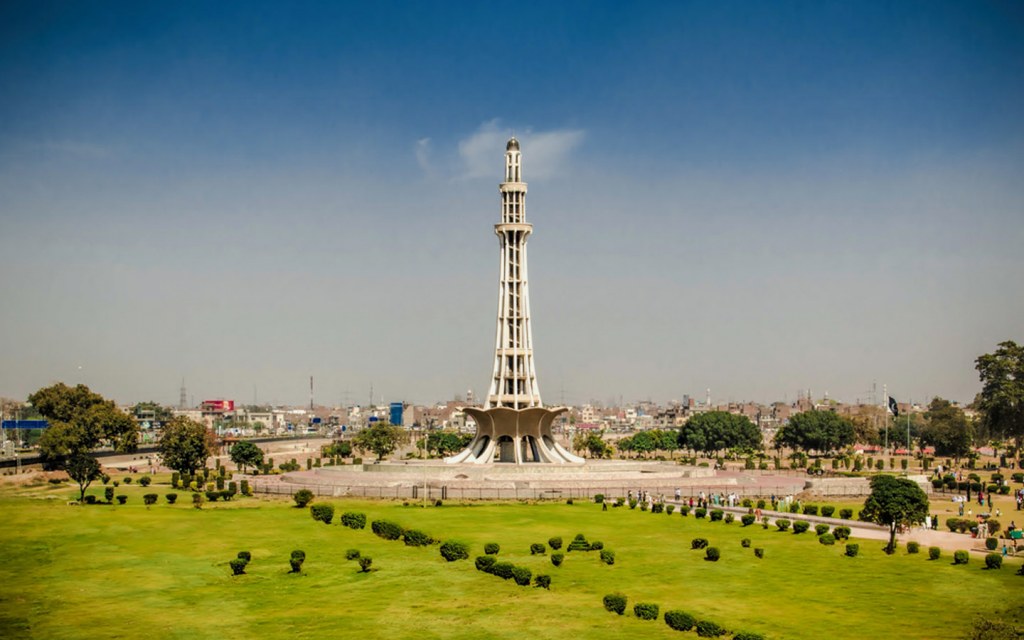
Minar-e-Pakistan is one of the most important and historically significant places to visit in Lahore. Standing tall at approximately 230 feet, this stunning tower is situated in the beautiful Iqbal Park – formerly known as Minto Park – in the heart of Lahore. Also known as the ‘Tower of Pakistan,’ this landmark commemorates the momentous occasion when the Pakistan Resolution (Qarardad-e-Pakistan) was signed on March 23rd, 1940, during a session of All India Muslim League. This historic resolution led to the creation of Pakistan and is celebrated each year as ‘Pakistan Day.’
Minar-e-Pakistan was designed by Naseer-ud-din Murat Khan and represents a brilliant fusion of traditional Islamic architecture and contemporary design. The minaret has a star-shaped base built approximately 26 feet above the ground with a sky-high 203-feet tall structure situated on top of it. The tower has a diameter of about 32 feet.
The bottom part of Minar-e-Pakistan is shaped like the blossoming petals of a flower. The base of the tower comprises four platforms depicting different phases of the creation of Pakistan, while the stone walls of Minar-e-Pakistan feature verses from the Holy Quran, the 99 attributes of Allah, the text of the historic Pakistan Resolution as well as works of Quaid-e-Azam Mohammed Ali Jinnah and national poet Allama Iqbal.
Location: Iqbal Park, Lahore.
Timings: 8:00 AM to 9:00 PM
Entry Fee: None
Shalimar Gardens
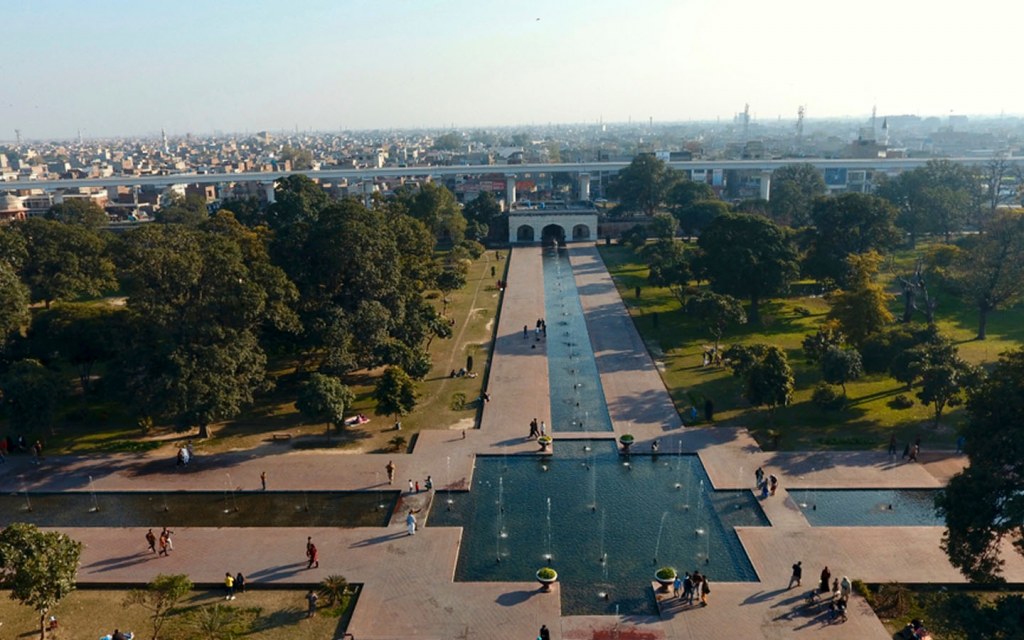
One of the only remaining gardens built during the Mughal reign in the once-imperial city of Lahore, Shalimar Gardens were added to the list of UNESCO World Heritage Sites in 1981 along with Lahore Fort. It was commissioned by Mughal Emperor Shah Jahan in the 17th century and is considered one of the top tourist attractions in Punjab. The design of these gardens, also known as Shalimar Bagh among the locals, was heavily influenced by the Shalimar Gardens in Kashmir, which were constructed by Emperor Jahangir, Shah Jahan’s processor and father.
The beautiful garden, which is among the most popular picnic places in Lahore, is located nearly 5 kilometer away from the Walled City of Lahore. The site of the gardens originally belonged to the Arain Mian family, who were granted the custodianship of the beautiful imperial garden by the emperor. Shalimar Gardens remained under the governance of Arain Mian family for over 350 years before it was nationalized in 1962 by General Ayub Khan.
Shalimar Gardens in Lahore are one of the most exquisite examples of landscaping, craftsmanship and engineering from the Mughal era. It is spread over 16 hectares of land and built in the style of Persian paradise gardens, considered a “microcosm of an earthly utopia” as per the historians. The gardens feature several levels, which each of them approximately 13 to 15 feet higher than the previous one.
The top terrace is shaped like a square and is called Bagh-e-Farah Baksh and features 105 fountains. The second and third terraces are known as the Bagh-e-Faiz Baksh, comprising 152 and 153 fountains respectively. The second terrace is shaped like a narrow rectangle while the third terrace mirrors the uppermost in its shape.
Location: Shalimar Chowk, G. T. Road, Shalimar Town, Lahore.
Timings: 8:00 AM to 6:00 PM
Entry Fee: PKR 20
Katas Raj Temple
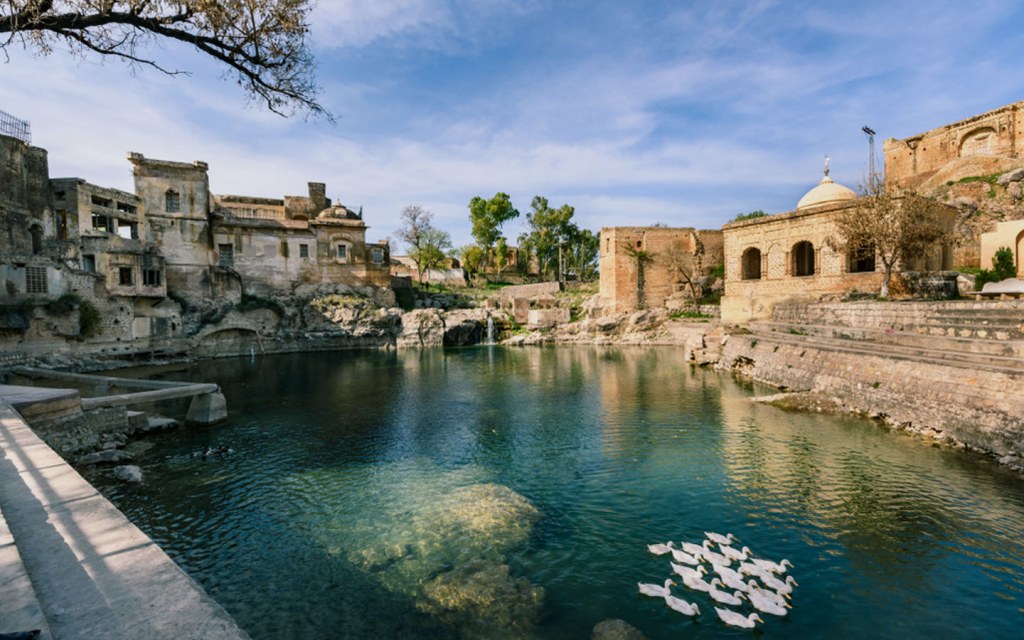
Katas Raj is a complex of seven ancient temples surrounding a pond considered sacred by Hindus. It is believed to have been constructed some 1500 years ago.
Located near Chakwal, these temples are located a little over a two-hour drive away from Islamabad, covering around 260 kanal of land. Until a few years ago, this site represented just another forgotten piece of history, though it started to gain traction over the past few years and is now considered one of the top one-day trip places in Punjab, especially among photographers and history-lovers.
The Katas Raj Temples hold immense significance in the Hindu mythology, as it is believed the bluish-green water of the pond, formed by the tears of Lord Shiva, which he shed following the death of his wife, washes away one’s sins. The remains of a Buddhist stupa can also be seen in the area along with some newly built structures.
Although the dilapidating and vastly ignored temple complex is being restored, the heavy vegetation around the temples and the tranquillity of the area makes it one of the most renowned tourist destinations in Punjab.
Moreover, this conglomeration of temples is one of the largest sacred sites for the followers of Hindu religion in Punjab.
Location: Kalar Kahar Road, Katas, Chakwal
Timings: Open 24 hours
Entry Fee: None
Noor Mahal
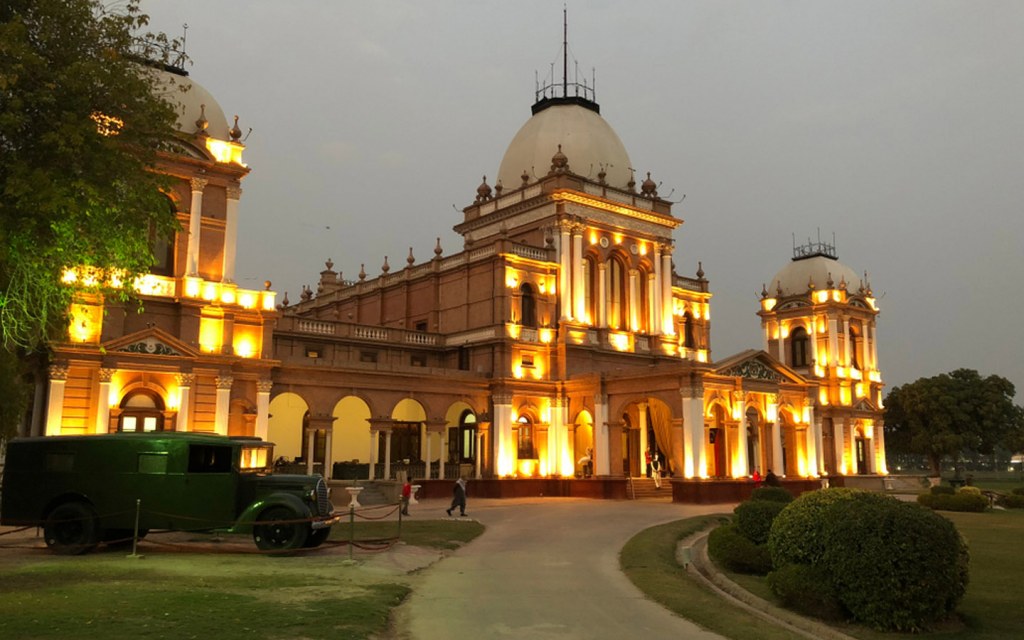
Standing proudly in the middle of a well-landscaped garden, the spectacular Noor Mahal is one of the most stunning reminders of the affluence of the Nawabs of Bahawalpur. Also known as the ‘Palace of Lights,’ this palatial building is situated a 3-hour drive away from Lahore in the once-princely state of Bahawalpur. The awe-inspiring Italian-style royal palace, which is presently being managed by the Pakistan Army, is one of the most noteworthy cultural heritage sites in Punjab.
The foundation for Noor Mahal was laid by Nawab of Bahawalpur Sir Sadiq Muhammad Khan IV in 1872. It was completed in 1875 and cost around PKR 12 lakh at the time. As the story goes, the nawab, who was also known as the ‘Shah Jahan of Bahawalpur’ for his interest in architecture, had built this lavish double-storey palace for his wife. However, after she refused to live there due to the close-by Basti Maluk Graveyard, Noor Mahal served as a guest house for other members of the royal family of Bahawalpur, dignitaries and other prominent personalities. Occasionally, Noor Mahal was also used as a State Court.
The luxurious Noor Mahal, one of the most renowned historical buildings in Punjab, covers an area of 8 kanal and comprises two floors and a basement. The palace has 32 rooms in total, each of them boasting an extremely lavish décor, beautiful carpets, extravagant curtains, gorgeous ornaments and other fixtures. The architecture of the building features design elements from both the traditional Islamic architecture and the Corinthian order.
Location: Bahawalpur Cantt, Bahawalpur.
Timings: 9:00 AM to 9:00 PM. Moreover, a light show at Noor Mahal is usually held around 7:30 PM every Saturday and Sunday.
Entry Fee: None
Derawar Fort
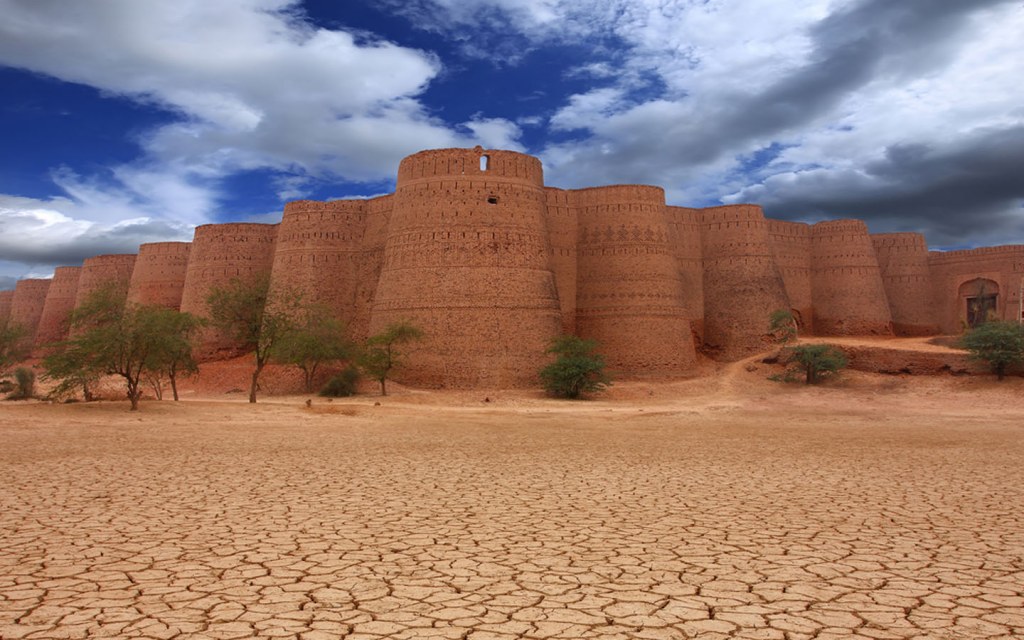
The sprawling Derawar Fort located about 100 kilometres south of Bahawalpur in Ahmedpur East is one of the oldest forts in Pakistan, dating all the way back to the 9th century. Situated in the picturesque Cholistan Desert, this fort is one of the most popular tourist destinations in Punjab.
Visible for miles in the vast desert, this fort may appear as a dilapidating red-bricked structure at a first glance, but it boasts a rather long and interesting history. According to the experts, Derawar Fort was constructed back in the 9th century as a tribute to King of Jaisalmer and Bahawalpur Rawal Deoraj Bhatti. Initially, it was called Dera Rawal, which gradually became Derawar. Then, in 1733, Nawab of Bahawalpur Sadeq Mohammad Khan I restored the fort to its current state before losing it. In 1804, Nawab Mubarak Khan reclaimed Derawar Fort, though it soon fell into the hands of the British army.
In 1733, Nawab of Bahawalpur Sadeq Mohammad Khan I took over and rebuilt the fort to how it looks like today. Nearly 15 years later, the Nawab lost Derawar Fort. However, Nawab Mubarak Khan reclaimed it in 1804 before the British forces invaded and captured it.
It is important to note that the fort is surrounded by brick walls spanning over an area of 1.5 kilometres with 30-metre-high bastions. Moreover, as per the archaeologists, the origin of some of the sites surrounding the fort have been traced to the Indus Valley Civilization.
Location: Derawar Fort Road, Derawar, Bahawalpur.
Timings: Open 24 hours
Entry Fee: None
Rohtas Fort

Yet another UNESCO World Heritage Site in Pakistan, the formidable Rohtas Fort is considered an epitome of military fortifications in the sub-continent. This virtually impenetrable fortress was built near the city of Dina in Jhelum District in 1541 under the orders of Pashtun King Sher Shah Suri, the founder of short-lived Suri dynasty.
This remarkably intact Rohtas Fort was constructed with an aim to prevent Mughal Emperor Humayun from invading the region following the Battle of Chausa, which he had famously lost. Owing to the fortress’ location atop an elevated hill on the Pothohar Plateau, the soldiers stationed there had a clear view of the passageway while allowing them to monitor the local Ghakkar tribe that was loyal to the Mughals.
The fortress, which has become a popular tourist attraction in Punjab, houses a small village that dates back to the era of the Suri Empire. The main complex is surrounded by four kilometres of fortified walls with 68 bastion towers and 12 gates. Also, it could hold up to 30,000 soldiers at a time.
UNESCO added Rohtas Fort to the list of World Heritage Sites in 1997 and described it as an “exceptional example of the Muslim military architecture of Central and South Asia.”
If you ever visit Jhelum, don’t forget to take a day trip to Rohtas Fort.
Location: Rohtas Fort Road, Rohtas, Jhelum.
Timings: 08:00 AM to 09:00 PM
Entry Fee: PKR 20
Khewra Salt Mines
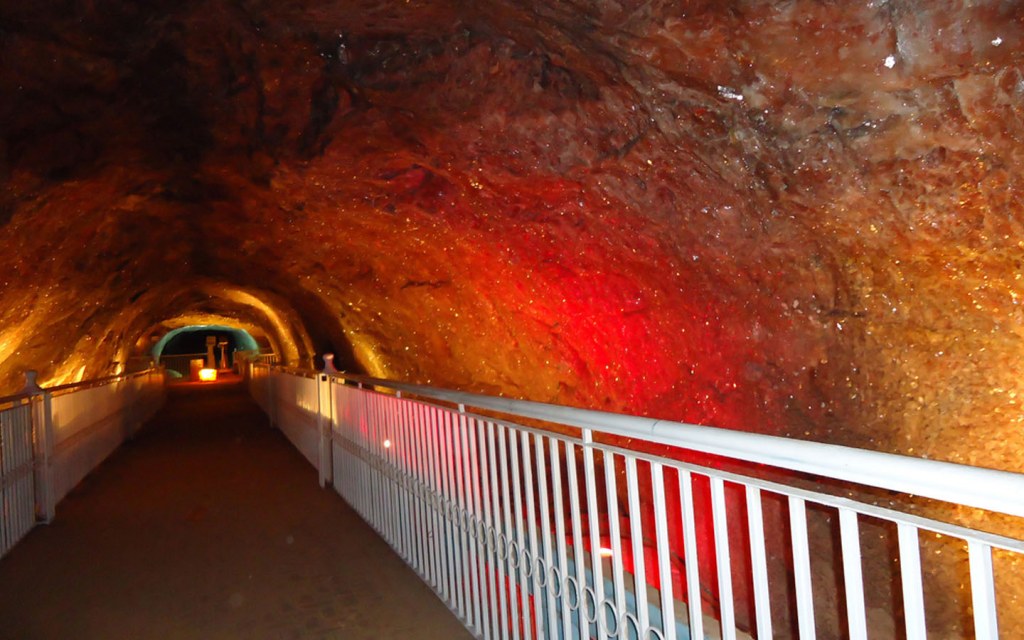
Located in the city of Khewra, near Pind Dadan Khan, Khewra Salt Mines are among the most renowned tourist destinations in Pakistan, famous among both domestic and foreign travellers alike. Along with being the largest reserve of edible salt in Pakistan, it also enjoys the status of being the oldest as well as the second-largest salt mine in the world and attracts hundreds of thousands of visitors every year. It was discovered by the troops of Alexander the Great in 320 BC.
The Khewra Mines, which are famous for the production of pink Himalayan salt, is situated at an altitude of 288 meters and comprise more than 40 kilometres of tunnels. Moreover, the site has 19 levels, with only seven located above the ground and the rest below the surface.
To make the trip to Khewra Mines convenient for the visitors, the authorities have installed an electric mining train that transports one from the entrance of the mines to its main hall. The site also features impressive carvings of important landmarks, including the stunning replicas of Minar-e-Pakistan, the Great Wall of China, Badshahi Mosque and Sheesh Mahal, among others.
Owing to the fact that a lot of students and families with children visit the mines, a cafeteria has also been established on the premises. An Asthma Resort has also been set up there by the PMDC.
Location: Khewra, Jhelum.
Timings: 9:00 AM to 6:00 PM
Entry Fee: PKR 200
Hiran Minar

One of the most popular picnic places in Punjab, the spectacular Hiran Minar is located in the suburbs of Sheikhupura. Also known as the ‘Deer Tower,’ this vast complex was once served as a hunting retreat for Mughal Emperor Jahangir. It was constructed in 1606 in the memory of the king’s favourite pet antelope, Mansraj. Given its proximity to the then-imperial city of Lahore, the lush green surroundings of Hiran Minar provided the royals and noblemen with an opportunity to the sport of hunting without having to travel too far.
The tower itself is about 100 feet tall with 214 holes on its outer surface, where the king’s hunting trophies once used to hang. The outer walls of the structure also bear intricate calligraphy praising the pet antelope. Furthermore, there is an enormous water tank right in front of Hiran Minar, from where a stone pathway connects the land to a lavish hunting pavilion called “baradari,” which was built for the emperor and his guests to rest during the excursion.
Meanwhile, the green belt surrounding the game-reserve was used as a hunting ground. To this day, Hiran Minar is one of the most peaceful tourist destinations in Punjab owing to its landscape and the thinly populated area.
It is also an ideal day-trip destination near Lahore.
Location: Hiran Minar Park Road, Sheikhupura
Timings: 8:00 AM to 8:00 PM
Entry Fee: None
So, which of these tourist attractions in Punjab are you planning to visit next?
To learn more about holiday destinations in Pakistan, stay connected to Zameen Blog – the best tourism and real estate blog in Pakistan. You can also share your thoughts and comments with us by dropping an email on blog@zameen.com. Also, please subscribe to our newsletter to receive the latest updates about the construction and property trends in Pakistan.
